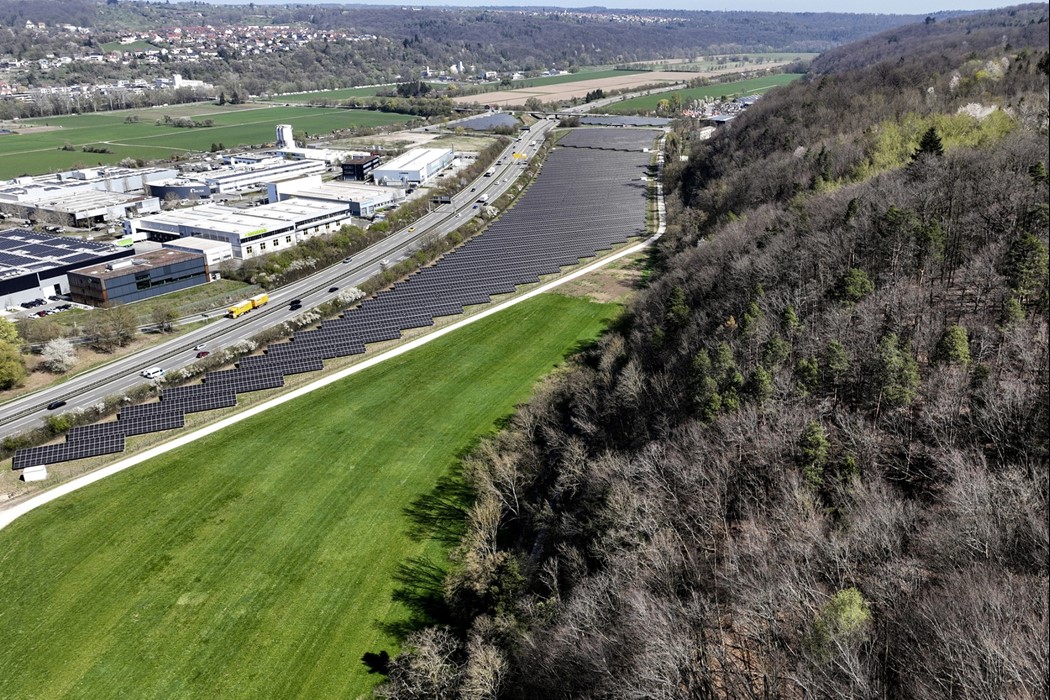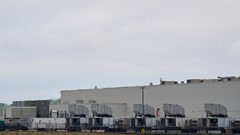Germany’s Red Tape Creates a Berlin-Sized Hole in Energy Shift
May 03, 2025 by Bloomberg(Bloomberg) -- Nestled along the banks of the Neckar River in southwest Germany, the bucolic university town of Tübingen is known for its association with poets and philosophers such as Georg Wilhelm Friedrich Hegel, but it’s now in the midst of a conflict that pits defense interests against energy security.
Located a short drive from the French and Swiss borders, Tübingen is far from any conflict zones, and yet German rules that reserve airspace for military use have meant the city of 90,000 had to cancel construction of three wind turbines. The site was carefully selected on the outskirts, with minimal disruption to nature and had the potential to provide electricity for 10,000 people .
“Everything went perfectly,” said Mayor Boris Palmer. “Then, at the last minute, the Bundeswehr — who’d never contacted us before — came and said ‘No’.” That meant around half a million euros invested into planning and approval was wasted, added the independent politician, who was previously a member of the Green party.

Tübingen isn’t alone. Across Germany, some 5 gigawatts of capacity — more than enough to power a city the size of Berlin — have been hampered since 2020 by military concerns over hindering the operation of radar and helicopters, according to wind-energy association BWE.
The issue bogs down two of Germany’s key priorities: becoming more self-sufficient in energy and bolstering national security. Both have taken on greater importance in the aftermath of Russia’s invasion of Ukraine, which triggered an energy crisis after Moscow cut off gas deliveries. And Spain’s widespread blackout this past week shows how vulnerable power grids in the midst of a transition to renewables can be.
The dilemma also reflects how Germany’s tangle of red tape could hamper efforts by Friedrich Merz’s new government — set to be sworn in on on Tuesday — to invest hundreds of billions of euros to shore up the sputtering economy and rearm as Donald Trump’s White House threatens to pull back from Europe’s defense.
As a pioneer in renewable power, Germany started installing large-scale wind farms some 20 years ago. As older facilities reach the end of their lifespans, one option is to replace them with newer ones with higher capacity — a process known as repowering.
New towers are taller, and blade tips can reach as high as 250 meters above ground, which in some cases is over twice the height of earlier models. That means more potential to encroach on airspace reserved for civilian and military radar and routes for helicopters.

The German military vetoed around 6% of wind projects during the approval process in the past four years, according to the federal agency that oversees defense infrastructure. While that might sound small, it translates to more than the capacity added annually in the country, said Leonhard Probst from the Fraunhofer Institute for Solar Energy Systems.
“The biggest problem is the uncertainty,” he said. “That causes many projects to fail before approval due to the obviously unclear and unpredictable processes.”
German authorities said defense issues aren’t the problem. “Military concerns were not always the sole deciding factor” in rejections of wind-power projects, said the defense-infrastructure agency. “The solution is therefore to plan projects carefully and involve the Bundeswehr at an early stage.”
Before a wind project even gets considered, there’s an informal inquiry. The Bundeswehr’s response times can take up to six months for a preliminary request, according to Andreas Hornig, head of BayWa r.e. Wind GmbH, one of Germany’s biggest wind-power developers.
Other countries don’t face the same complexity as Germany, where at least two agencies are involved in dealing with military airspace issues: the Bundeswehr’s air-traffic department and the defense-infrastruture agency. With responsibilities divided between them, information can fall through the cracks.
“It’s a very specific, uncharted problem,” said Inigo Olaguibel, chairman of Qualitas Energy, the biggest investor in German repowering projects. “We need to find solutions.”

The sector has been in discussions with the German military as well as policymakers for months. Potential workarounds range from laxer rules in certain areas to special devices to support radar signals near turbines like ones developed by Indra Sistemas SA for neighboring Poland, he added.
Finding a solution is critical, with Germany expected to be one of the three largest markets for repowering projects over the next decade, according to BloombergNEF estimates. But the current pace indicates it will fall short of a goal of 115 gigawatts of installed onshore capacity by 2030.
To make up the shortfall, Germany will need to upgrade existing wind parks and add new ones. But since 2020, only about 20% of onshore wind projects that were affected by military issues progressed through the approval process — and less than half ultimately received authorization, according to a study by the BWE wind-power lobby group.

“Neither military training areas nor helicopter routes are a fundamental problem, but rather the Bundeswehr’s late and incomplete communication and its unwillingness to find compromise solutions,” it said in the study.
The German military has gotten the message and communication has become better and more transparent, according to BayWa’s Hornig. In cases where plans have been rejected, the Bundeswehr has offered alternatives, such as accepting lower turbines or relocations.
“These regulations do not represent an absolute barrier,” said Detlef Schreiber, chief executive officer of CEE Group, an asset manager specializing in repowering projects. Wind-power upgrades “can still make economic sense if adjustments are made — to the height of the turbines, for example.”

Along Germany’s coastline in the north — where most wind farms are built — the landscape is flat, which means areas kept free for radar installations are relatively large. But in Tübingen, in rolling hills near the Black Forest, the issue was low-flying helicopters.
Relocating the routes a few hundred meters would have been enough to proceed with the wind project, but the Bundeswehr said it couldn’t legally designate new ones, according to the mayor.
“You get to the point where you realize that it’s not because of reality, but because of the regulations — as is often the case in Germany,” Palmer said.
Despite the headaches, Tübingen’s goal of becoming carbon neutral by 2030 isn’t in jeopardy. A bigger wind project is well on its way, with the necessary planning information from the German military.
“This means that what we’ve experienced — being stopped at the last minute — should no longer happen,” he said.
©2025 Bloomberg L.P.
By


















